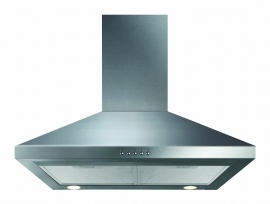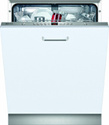Extractor Hood Features Guide
Extractor Hood Features Guide
Cooker Hood Types
A breakdown of the different hood types and installation advice can be found at our extractor installation guide. The following guide will be more of a glossary which you can refer to regarding the terms you may come across when researching the features of your hood.
General Hood Features
Extraction System:
The extraction system is the way which the air is extracted and disposed of. There are 2 available options for this:
- Ducted - This would be using a ducting kit to extract the air through a duct system to a vent on a wall on the outside of the house.
- Recirculation - This is a method of recycling the air. The dirty air is extracted and filtered through a filtering system removing the smell and dirty air and then pumping clean air back in to the room.
Generally wherever possible it is recommended to go for the ducting option. Depending on where the hood is located in the house though can determine if it is a feasible option.
Grease Filter:
Regardless of what extraction type you choose your hood will come fitted with a grease filter. A grease filter will trap fat and other dirt that gets extracted. These will need to be cleaned regularly to keep them effective. Some of these are dishwasher cleanable but not all are, so it is best to check your hoods manual to find out.
Charcoal Filter:
Charcoal filters (sometimes also known as carbon filters) are required if you want to use your hood in recirculation mode. Whereas the grease filter absorbs the physical dirt a charcoal filters job is to absorb the odours so that when the air is pumped back in to the room it doesn't smell.
They will need to be replaced regularly, roughly every 6 months is recommended but this time frame can change based on which filters you buy and how often you have the extractor on.

Maximum Airflow Rate:
Hoods will have multiple speed settings and the maximum airflow will be rate rate at which the air can be extracted through the hood on its highest setting. It is usually measured in m³ (cubic metre) per hour.
Number of Lights:
This is simply the amount of lights that are built in to the cooker hood. The more lights you have the more the cooking area can be lit up. Both convenient and adds to your safety as you are less likely to injure yourself due to low light.
Control Style:
This is referencing how you will control the hood. There are 3 main ways which the hoods can be controlled. They are:
- Push Button: This will be for when you have physical buttons which you can press in to turn the motor on and off.
- Touch Controls: Similar controls to a push button, but instead of being physical buttons they are easy to use touch buttons.
- Slider: This is for when there is a slider control for the extraction. Instead of pressing a button you will slide the control and the further along you slide the more powerful it extracts.





















